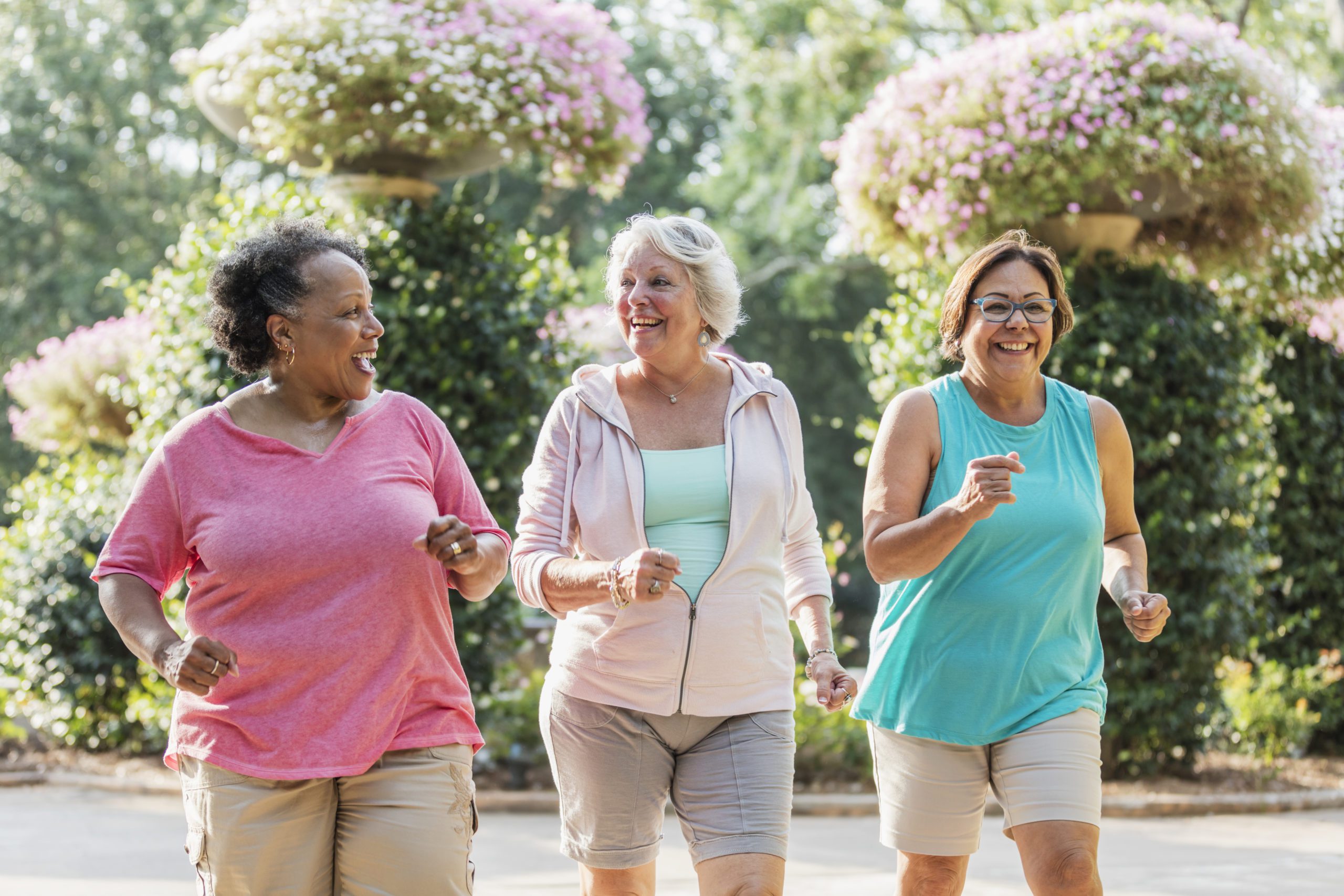Haga clic aquí para leer este boletín en español.
At the beginning of each year, many people set goals to get more exercise. In this month’s newsletter, we dive into the benefits of being active, and how exercise relates to brain health.
Exercise and Brain Health
Studies have found that exercise is associated with reduced brain decay. Therefore, physical activity may help protect against cognitive decline. In a study of 120 participants, individuals who exercised regularly showed growth of the hippocampus, a region of the brain associated with memory, and they performed better on memory tests compared to individuals in the control group.
In addition, a trial of 100 participants with Mild Cognitive Impairment (MCI) found that individuals who started exercising regularly performed better on memory assessments and experienced less brain shrinkage over time compared to participants with no exercise intervention.
 A recent study conducted by a UC San Francisco team led by Dr. Kaitlin Casaletto found that physical activity is associated with synaptic integrity, an indicator of brain health and cognition. The research team found a correlation between regular physical activity and increased levels of proteins responsible for helping brain cells communicate. This finding has helped identify ways in which exercise may help maintain brain health later in life.
A recent study conducted by a UC San Francisco team led by Dr. Kaitlin Casaletto found that physical activity is associated with synaptic integrity, an indicator of brain health and cognition. The research team found a correlation between regular physical activity and increased levels of proteins responsible for helping brain cells communicate. This finding has helped identify ways in which exercise may help maintain brain health later in life.
Innovations in Exercise Research
Researchers at the Australian National University are exploring a novel method to harness the benefits of physical activity: “exercise in a pill.” After exercise, the body produces molecular signals that protect against aging-related degeneration of brain function and eyesight. The team hopes to translate these molecular changes into a pharmaceutical to treat neurodegenerative conditions like Parkinson’s or Alzheimer’s.
Nevertheless, the researchers encourage individuals without mobility limitations to engage in regular physical activity. The countless whole-body rewards of consistent exercise, including improved cardiovascular, immune, and mental health, would be impossible to pack into a pill.
 Tips on Staying Physically Active
Tips on Staying Physically Active
Starting to exercise regularly may seem like a daunting goal. However, making exercise a social activity, such as going on walks with a neighbor or meeting with family members for a sports game, and setting goals with loved ones are great ways to start. Joining a dance class can be another fun and low stress way to begin achieving exercise goals.
Physical activity doesn’t necessarily have to be in the form of repetitive, strenuous exercises; some unique, simple ways to keep active include gardening or walking your dog. Introducing variety in exercising by switching up the type of exercise, such as balance, flexibility, and strength, is another way to stay engaged. The key to maintaining a habit of regular exercise is finding interesting ways to exercise that are enjoyable and sustainable.
 Created by the UC Davis School of Medicine and in partnership with the City of Oakland, The Good Life program is a network of wellness centers focused on providing opportunities for healthy aging, such as exercise classes and nutrition tips. Classes can be accessed for free on Zoom via their website: https://thegoodlifepath.org/lets-get-moving/.
Created by the UC Davis School of Medicine and in partnership with the City of Oakland, The Good Life program is a network of wellness centers focused on providing opportunities for healthy aging, such as exercise classes and nutrition tips. Classes can be accessed for free on Zoom via their website: https://thegoodlifepath.org/lets-get-moving/.
For more information on physical activity and health, please visit these resources below.
· https://www.alz.org/help-support/brain_health/stay_physically_active
· https://www.cdc.gov/physicalactivity/basics/older_adults/index.htm
· https://www.nia.nih.gov/health/exercise-physical-activity
—
No matter what your resolutions are, we hope you can make progress towards your goals in 2022. Thank you to all our participants, whose dedication is essential to our goal of advancing brain health research!




